#Chinese symbolism
Photo
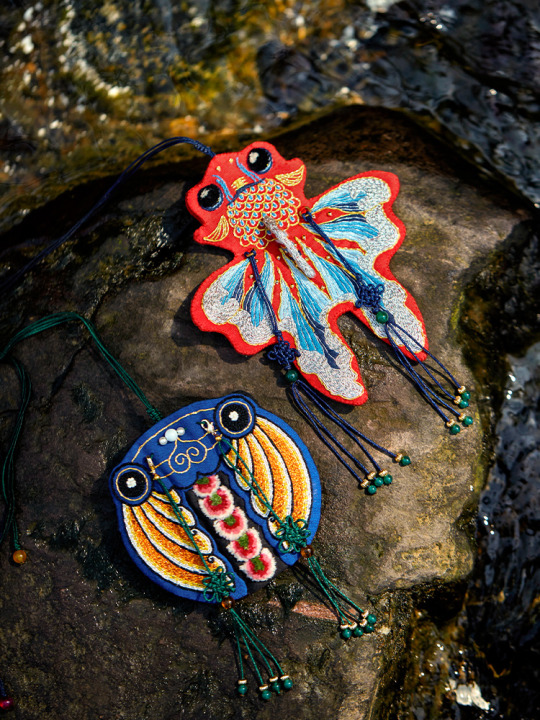
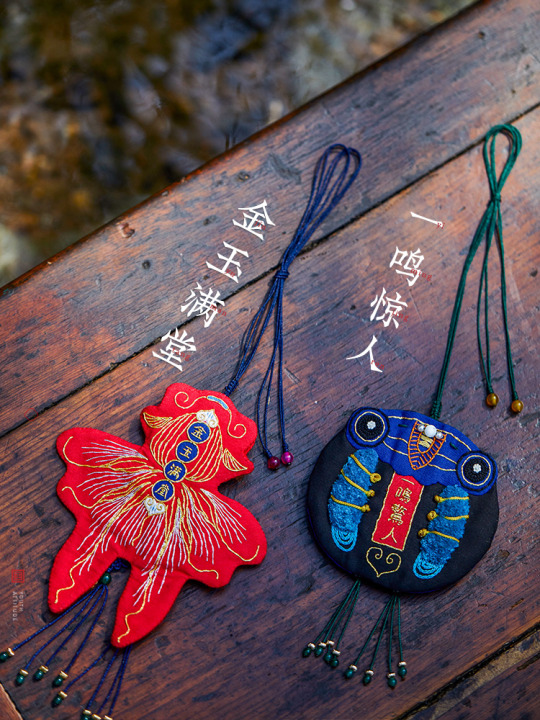
hebao by 王的手创
the goldfish represents “ abundant wealth (fig. gold and jade fill the hall)”
the cicada represents “to amaze the world with a single brilliant feat”
254 notes
·
View notes
Text
This Lunar New Year Is the Year of the Dragon: Why the Beast Is a Big Deal in Chinese Culture
— By Chad De Guzman | Wednesday February 6, 2024 | Time Magazine
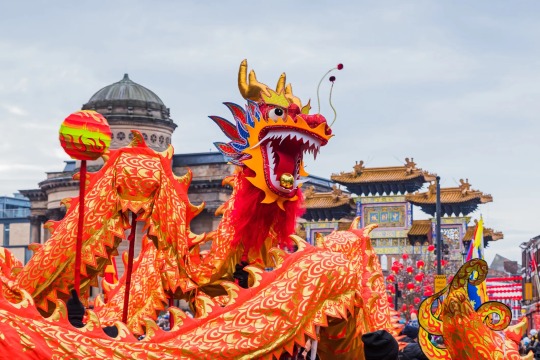
A traditional Chinese New Year dragon dance is performed in Liverpool’s Chinatown in January 2023.Getty Images
The last time China’s birth rates peaked was in 2012: that year, for every 1,000 people, there were 15 live births, a far cry from 2023’s 6.39. It was a statistical anomaly, considering the country’s ongoing state of demographic decline, which has proven extremely difficult to reverse. But 2024 may just see another baby boom for China, for the same reason as 12 years ago: it’s a Year of the Dragon.
Dragons are a big deal in Chinese culture. Whereas in the West dragons are often depicted as winged, fire-breathing monsters, the Chinese dragon, or the loong, is a symbol of strength and magnanimity. The mythical being is so revered that it snagged a spot as the only fictional creature in the Chinese Zodiac’s divine roster. And the imagery pervades society today—whether in boats, dances, or the stars.
International discourse about China’s economy or politics also often references the country as a “red dragon,” which critics have said subconsciously panders to Orientalism and fears of communism. But many Chinese proudly embrace the connection: China’s President Xi Jinping told former President Donald Trump in 2017 that the Chinese people are black-haired, yellow-skinned “descendants of the dragon.”
That’s why, in Years of the Dragon (which happen every 12 years), spikes in births tend to occur in China (as well as other countries with large Chinese populations, such as Singapore), as many aspiring parents try to time their pregnancies to result in a child born with the beast’s positive superstitious associations.
A Symbol of Prosperity
Where the Chinese dragon first came from is still debated by historians and archaeologists. But one of the most ancient images of the loong was unearthed in a tomb in 1987 in Puyang, Henan: a two-meter-long statue dating back to the Neolithic civilization of Yangshao Culture some 5,000–7,500 years ago. Meanwhile, Hongshan Culture’s Jade Dragon—a C-shaped carving with a snout, mane, and thin eyes—could be traced back to Inner Mongolia five millennia back.
Marco Meccarelli, an art historian at the University of Macerata in Italy, writes that there are four reliable theories for how the loong came to be: first, a deified snake whose anatomy is a collage of other worldly animals (based upon how, as ancient Chinese tribes merged, so did the animal totems that represent them); second, a callback to the Chinese alligator; third, a reference to thunder and a harbinger of rain; and lastly, as a by-product of nature worship.
Most of these theories point to the dragon’s supposed influence on water, because they are believed to be gods of the element, and thus, agricultural numen for a bountiful harvest. Some academics have said that across regions, ancient Chinese groups continued to enrich the dragon image with features of animals most familiar to them—for example, those living near the Liaohe River in northeast China integrated the hog into the dragon image, while people in central China added the cow, and up north where Shanxi is now, earlier residents mixed the dragon’s features with those of the snake.
A Symbol of Power
Nothing cemented the Chinese dragon’s might better than when it became a symbol of the empire. The mythical Yellow Emperor, a legendary sovereign, is said to have been fetched by a Chinese dragon to head to the afterlife. The loong are also said to have literally fathered emperors, or at least that’s what Liu Bang, the first emperor of the Han dynasty (202-195 B.C.), made his subjects believe: that he was born after his mother consorted with a Chinese dragon.
“The dragon totem and its corresponding clout were employed as a political tool for wielding power in imperial China,” Xiaohuan Zhao, associate professor of Chinese literary and theater Studies at the University of Sydney, tells TIME.
From then on, the loong was a recurrent theme across dynasties. The seat of the emperor was called the Dragon Throne, and every emperor was called “the true Dragon as the Son of Heaven.” D. C. Zhang, a researcher in the Institute of Oriental Studies at the Slovak Academy of Sciences in Bratislava, tells TIME that later dynasties even prohibited commoners from using any Chinese dragon motif on their clothes if they weren’t part of the imperial family.
The Qing Dynasty (1644-1912) created the first iteration of a Chinese national flag featuring a dragon with a red pearl, which was to be hung on Navy ships. But as the Qing Dynasty weakened after several notable military losses, including the First Sino-Japanese War (1894-1895) and Boxer Rebellion of 1900, caricatures of the dragon began to be used as a form to protest against the government for its weakness, says Zhang. But with the dynasty’s fall after the establishment of the Republic of China (ROC)—which would then become Taiwan—in 1912, Zhang says the pursuit of a national emblem was temporarily cast aside.
During the Second Sino-Japanese War (1937-1945), there had been renewed calls to find a unifying symbol to boost morale, and the dragon was among several animals considered. But when Mao Zedong established the People’s Republic of China (PRC) in 1949, the quest for a unifying symbol for the Chinese was forgotten again, as the country pivoted priorities toward rapid industrial development.
A Symbol of Unity
Outside China, the dragon motif may have quickly caught on, but inside it, the dragon was not as influential until the 1980s, says Zhang. In 1978, Taiwanese musician Hou Dejian composed a song entitled “Heirs of the Dragon” as a means to express frustration over the U.S.’s decision to recognize the PRC as China’s legitimate government and sever diplomatic ties with the ROC (Taiwan). Lee Chien-fu, a Taiwanese student at the time, released a cover of the song in 1980 that grew immensely popular on the island.
Despite being a song decrying Taiwan’s disappointment, the song managed to cross the strait and also resonated with citizens of the mainland. Zhang says “China was becoming stronger” and its government tried to co-opt “Heirs of the Dragon” as it needed an emblem for unification and prosperity “which would be apolitical and would be inclusive to all Chinese nations even for those living abroad.” Hou, who had since moved to China, sang the song in a Chinese state variety show to usher in the Year of the Dragon in 1988.
But the song’s popularity also led it to be used against the Chinese leadership. Dissidents turned “Heirs of the Dragon” back into a protest anthem before the 1989 Tiananmen Square crackdown, according to the South China Morning Post, with Hou even changing some of the lyrics according to Zhang. Hou was deported back to Taiwan in 1990, but his music stayed with the ethnically Chinese and the Chinese diaspora, Zhang says.
The song as well as China’s overt efforts to create a national symbol that transcends borders, Zhang says, play a large part in the lasting cultural significance of the loong. And the dragon’s historic regality has certainly helped boost the mythos, symbolism, and popular sentimental attachment for Chinese people today, says University of Sydney’s Zhao. “The basic characteristics, features, beliefs and practices associated with dragon totem and clout remain largely unchanged,” he says. “It’s very much a living tradition.”
#China 🇨🇳#Chinese Culture#Chinese Symbolism#Chinese Dragon 🐉 Symbolism#Lunar Year#Year of Dragon 🐉#Beast#Big Deal#Chad De Guzman#Time Magazine#Chinatown#Symbol of Prosperity | Power | Unity
2 notes
·
View notes
Note
Is the Taotie in Dracones Mundi?
It is not! My reasons for not including Taotie are arbitrary, but basically there are a lot of dragons endemic in East Asia so I tend to focus on the animals specifically known as dragons, whereas in other world regions I am a bit more lax about what is or isn't a dragon. Taotie presumably exist in the world of Dracones Mundi, but they are not classified as dragons (within my own worldbuilding!) and are therefore not in the dragon field guide! :3
Other projects may have a dragon specifically for taotie but I don't, as a matter of personal preference rather than any rules on what is or is not a dragon
3 notes
·
View notes
Text
So … the grass on the side of the track decided to spontaneously combust which is fun

#[insert something about symbolism and foreshadowing here]#f1#formula 1#formula one#china gp 2024#chinese grand prix 2024#chinese gp 2024
655 notes
·
View notes
Text



Wanted to join in on @ratblazer's DTIYS challenge for Johnstantine's upcoming b'day! I'm doing a Hellblazer marathon read so the timing couldn't be any better~ this was really fun!
#john constantine#dc comics#vertigo comics#hellblazer#my art#jl remix#on a hellblazer binge because that's apparently what I do the minute I learn a character's a twin#snuck in the number 4 among the fake occult symbols because im chinese and think that's funny
237 notes
·
View notes
Photo
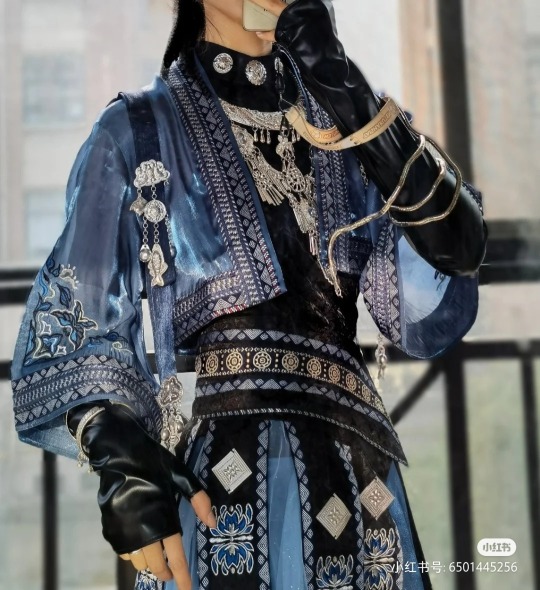
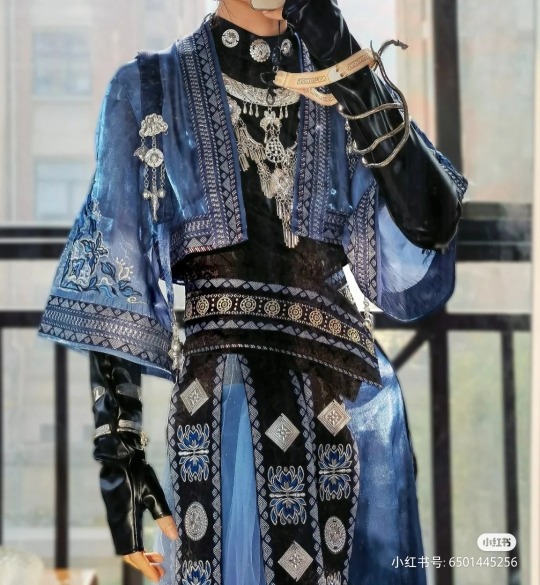
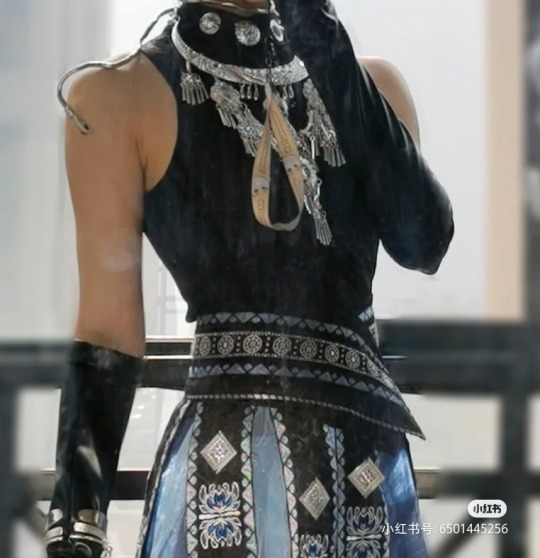


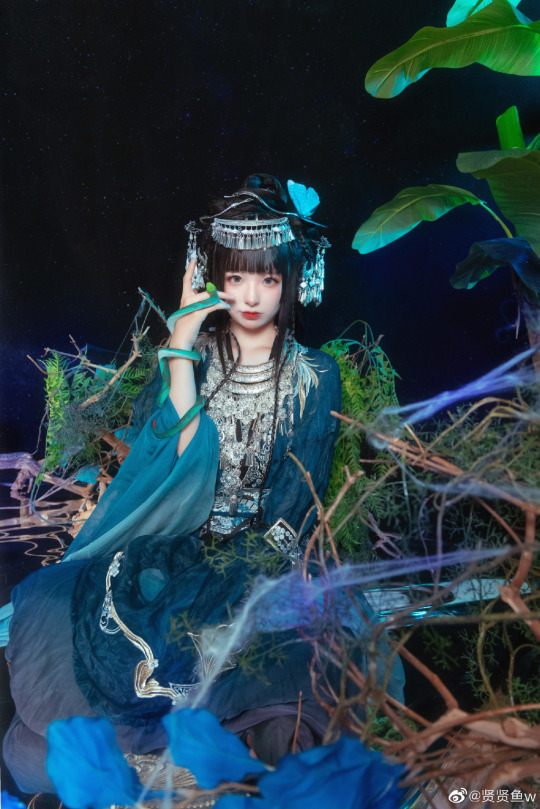

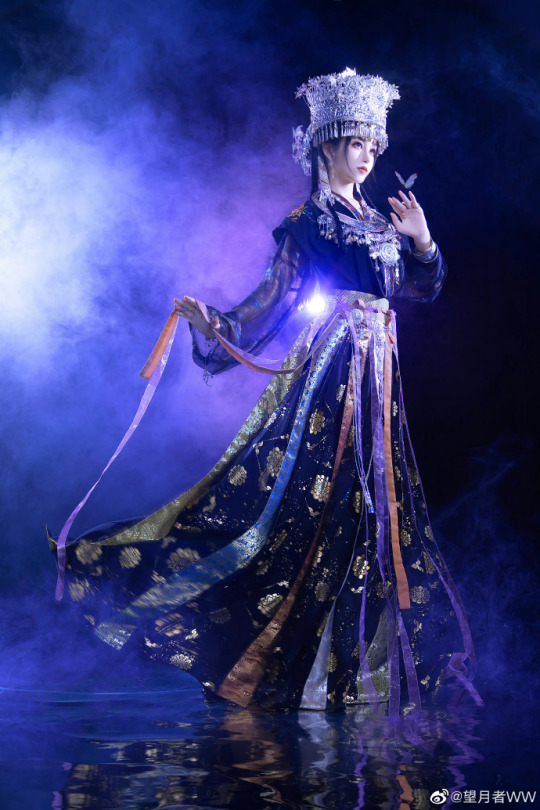

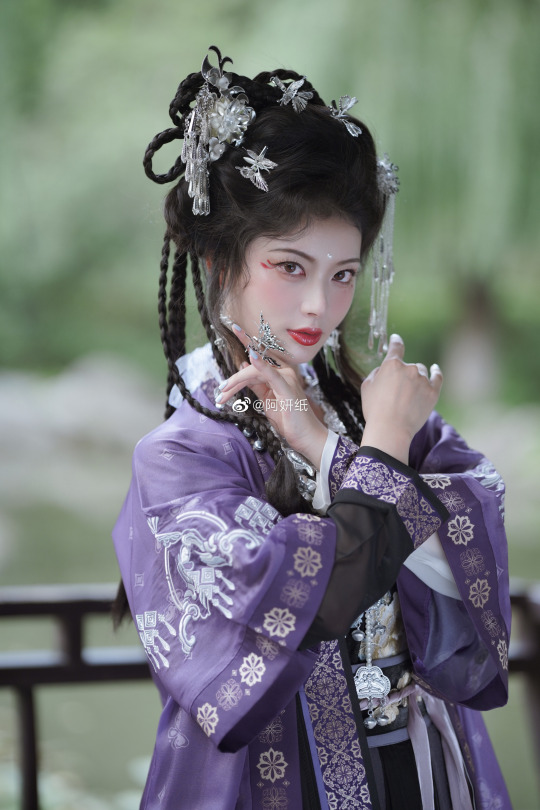
hanfu fashion matched with miao fashion by chinese designers
#china#hanfu#fashion#chinese fashion#miao fashion#designers call this type miaojiang style#miaojiang苗疆 is a concept originated from wuxia culture#wuxia mmorpg game usually have a martial art school called 五仙教 or 五毒教#that is inspired by miao people#miaojiang style is influenced by character design of these mmorpg game#the animals and insects elements such as small snake#butterfly#spider etc. are related from 五毒wudu#it symbolizes the 巫蛊wugu culture of 五毒wudu in wuxia fictions and games#credit as watermark
2K notes
·
View notes
Text
i just posted but i feel INSANE hua cheng’s entire appearance in the ghost groom arc is just symbolism.
when xie lian is alone (having sent everyone away, in danger but perfectly capable of fighting his way out), hua cheng steps in front of xie lian, offers his hand, and guides xie lian through the woods to where he needs to be. monsters cower before him, magical barriers don’t stop him, he steps on the skulls of enemies and crushes them so thoroughly that xie lian behind him feels like he is walking on flat ground. he doesn’t just swoop in without asking — he offers his hand, and waits, and xie lian willingly reaches out and lets himself be guided. and his grip is featherlight, even as he steers xie lian through danger and darkness. his blood rain warns away all who would dare harm them, but xie lian doesn’t get hit by a drop. and hua cheng does this all in his true form, not in disguise, because he’s not playing a character or trying to achieve anything, this is just him. despite not being confident enough to face xie lian directly, hua cheng has already shown him exactly who he is.
(now excuse me while i gnaw through an entire wall because how was this not glaringly obvious to me all along)
#tgcf#tgcf meta#hua cheng#my hyperfixation demon#hualian#kinda ig#rereading tgcf#goddd#writing this post was a fucking EXERCISE in pronouns#but also. augh. stuff that i think. the translation doesn’t get across.#i checked the eng translation and i think. the english gets preoccupied with the descriptions#and doesn’t get across the very. symbolic atmosphere of the whole thing. for me anyway#like when you’re performing a ritual and you can feel the meaning soaked into every gesture. it hit me when i was reading the chinese#something something orpheus and eurydice. hey. hey that’s a thought.#stuffs that into the back
516 notes
·
View notes
Text
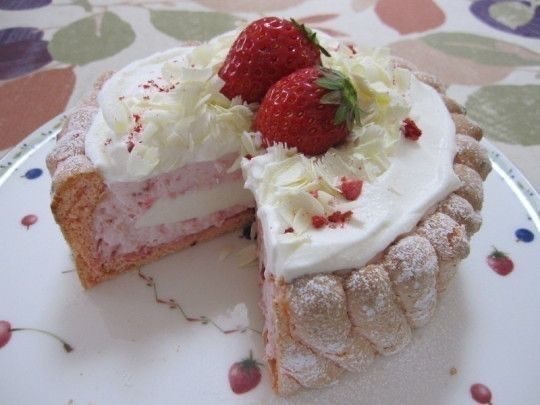


Lonely innnnn GOoOrgeous 👼🏻🤍
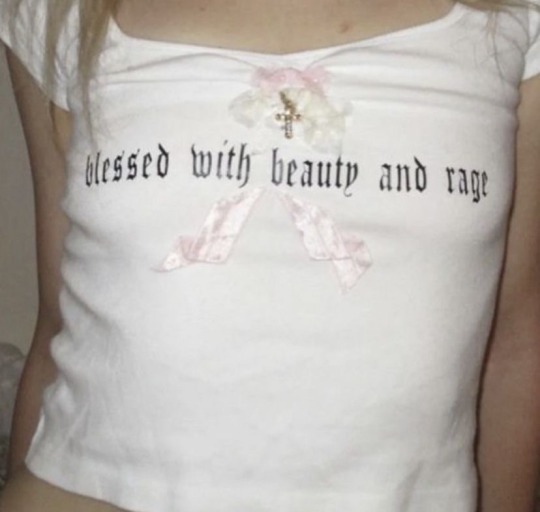


#moodboard#soft moodboard#coquette#dollette#messy moodboard#simple moodboard#pink moodboard#angelcore#archive#rp help#fakeland#fk#messy layout#zhang miaoyi#cutecore moodbord#dollcore#dollcore moodboard#chinese#babycore#symbols#ig bios#carrd material#free moodboard
83 notes
·
View notes
Text

to lose my life or to lose my love that's the nightmare i've been running from
#fanart#honkai star rail#hsr#blade#hsr blade#yingxing#dan feng#imbibitor lunae#yinyue jun#white lies - to lose my life#also flower symbolism#but i pretty much forgot about it after the sketch stage#but it was supposed to be#pine - perseverance and integrity for blade#peach blossoms - love romance and marriage#in this case it's fading love#idk#and chinese monthly rose - longevity for dan feng#dan heng#every time i type “dan” i hope i don't accidentally write “dang” and notice it too late 😭#renheng
173 notes
·
View notes
Text
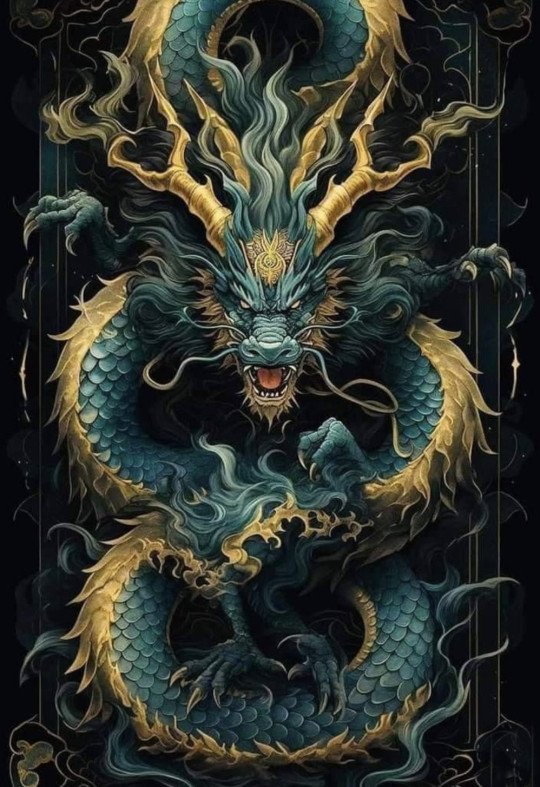
Legends of the humanoids
Reptilian humanoids (6)
Azure Dragon – Meng Zhang, the blue divine sovereign who protects the East.
The Azure Dragon is one of the guardians of the four cardinal directions in traditional Chinese culture, and according to the Five Elements phylosophy (Wuxing: Ref), the Azure Dragon is a spirit animal of the East. The Azure dragon has been considered a auspicious sign since ancient times, and governs spring (January, February and March).
In the Taoist version of his name, he was known as the divine sovereign ‘Meng Zhang’ and was the founder of the Dragon Tribe (a tribe that lived in the Dragon Realm and respected freedom).
The guardians of the four cardinal directions is another name for the Four Gods (Four Symbols) in Chinese mythology. They are the Blue Dragon, White Tiger, Vermilion Bird and the Black Tortoise (also called "Black Warrior").
Symbol of the five elements of the bagua, god of the four directions, genus of the divine sovereigns.
In Taoism, the Four Symbols have been assigned human identities and names. The Azure Dragon of the East is named ‘Meng Zhang’, the Vermilion Bird of the South is called ‘Ling Guang’, the White Tiger of the West is ‘Jian Bing’, and the Black Tortoise of the North ‘Zhi Ming’.
Astronomically, it corresponds to the Chinese constellations system, the Seven Eastern Mansions of the Twenty-Eight Mansions. The name derives from the seven eastern mansions (Horn, Neck, Root, Room, Heart, Tail and Winnowing Basket) being linked together to form the figure of a dragon.

伝説のヒューマノイドたち
ヒト型爬虫類 (6)
青龍 〜 東方を守護する蒼い神君「孟章」
青龍は中国の伝統文化の中の天之四霊 (てんのしれい) の一つで、五行学説(参照)に基づくと、青龍は東方の霊獣である。青龍は古来瑞兆とされており、青龍は、春 (1月、2月、3月) を司る。
道教における人格神化した名前では、神君「孟章」と呼ばれ、「龍族 (龍界に住み、自由であることを尊ぶ種族)」の始祖とされた。
天之四霊(てんのしれい)は、中国神話に登場する四神(四象)の別称。青龍、白虎、朱雀、玄武のことである。八卦五行の象徴、四方の神、四帝の属。
道教では、四象には人間の身分と名前が与えられている。東の青龍は孟章(もうしょう)、南の朱雀は霊光(れいこう)、西の白虎は建冰(けんびん)、北の黒亀は執明(めいしゅう)と呼ばれる。
天文学的には、中国の星座系、二十八宿の東方七宿に相当する。東方七宿(角宿・亢宿(頸)・氐宿(根)・房宿(室)・心宿・尾宿・箕宿)が連なり、龍の姿になることからこの名がある。
#azure dragon#four symbols#four gods#chinese mythology#chinese constellations system#guardian of the east#humanoids#legendary creatures#hybrids#hybrid beasts#cryptids#therianthropy#legend#mythology#folklore#s.f.#nature#art
101 notes
·
View notes
Text

fuck it. plaguesona
#i thought of this a couple weeks ago on the bus a couple seats away from someone loudly coughing into the open air#i think something snapped and i decided to make a fuckin. medieval ass plague sona. horseman of pestilence fursona#this is also why i was asking abt animals with medical symbolism.. originally i wanted a two headed snake like the staff of caduceus#but it turns out thats actually hermes symbol. the real symbol for medicine is the rod of asclepius which looks pretty similar#the difference is that theres only one snake and its twined around a stick. ironically mercy from overwatch's weapons are named after#the caduceus despite the misconception LMAOOO#snakes were the most consistent medicine related animal i could find even across multiple cultures so it couldve really worked#if i could actually draw scalies.. one of my earliest sketches had a cobra with a syringe at the end of its tail like a rattlesnake#and it had markings similar to the syringe tube but i didnt have much else going on so i scrapped it#i was also recommended animals with less obvious ties to medicine like jellyfish and horseshoe crabs and learned something new ^_^#im not confident i could pull off a non-mammal furry but they were really good ideas i might put into smth else.. i also thought of#axolotls bc of their regenerative thing and growing back limbs but i think that would suit smth like a surgeon or amputation...#possums and bats were also an option bc theyre actually really resistant to most diseases like rabies but i feel like ppl wouldnt know that#if they saw it so it looks a little ironic at a glance. rabbits rats and mice were my second option bc of animal testing and lab rats#less obvious reference but the moon rabbit in chinese mythology is loosely connected to medicine bc it makes the elixir of life#otherwise lab mice in a pharmacy / modern medicine setting seemed fitting and jerboa tails remind me of cotton buds#and. ironically. jerboas are more closely related to elephants than rats and mice. can you believe it#my art#myart#my oc#sona#plaguesona#cottonbud#fur#furry art#character design#ref sheet#oc ref sheet
119 notes
·
View notes
Text

a flower named “you”
#GO LISTEN TO A FLOWER NAMED YOU BY ASIAN KUNG-FU GENERATION (also read the lyrics. they work well with mai and maki)#anyways. the flowers in the background are a bit abstract in my painting of them. but the flowers are azaleas and pink larkspurs#azaleas main meanings are: take care of yourself for me. temperance. fragile passion. and are also the chinese symbol of womanhood#and pink larkspurs represent fickleness#doing the sketch for this was really fun#i got pretty excited to draw mai- and also to draw more women#despite mainly drawing men nowadays; back in the day i used to like. exclusively draw women. exclusively#i never drew men. or if i did it was like once a year or something#also since i did this when i was little; i ended up drawing heavily implied to be lesbians without really knowing what lesbians were LMAO#jjk#jujutsu kaisen#jjk fanart#jujutsu kaisen fanart#jjk art#jujutsu kaisen art#mai zenin#zenin mai#jjk mai#mai jjk#jujutsu kaisen mai#mai jujutsu kaisen#watercolor#my artwork
98 notes
·
View notes
Text
i’ve got two zhongli origin theories
1. he’s a fallen star or a piece of the sun that fell in teyvat or a sun god/solar chariot
2. hes a servant of celestia but was banished/demoted for disobedience
theory 1 is an old theory but i always feel he’s an astral body of some sorts “planet befall” is his burst name “stars dim light fades” is his namecard description “gold is the tears of the sun” this is what the melusines say after being handed a piece of cor lapis the fact the solar chariot crashed when rex lapis was young and then zhongli is always symbolized by the sun with gold as his signature item. All the other archons (ei, rukkha, nahida, furina etc) are represented by the moon as are many other deities or divinities (azhdaha, guizhong, xiao and ganyu) zhongli is one of the few immortals to fully embody the sun
theory 2 has more to do with his connections to celestia. while super subject to change and not at all reliable i always think about one of zhongli’s beta lines is about celestia and he speaks very fondly of it stating he hasn’t been there is a long time next is the mora he produces with the triquetra symbol associated with celestia
then in chinese it states zhongli was demoted 6000 years ago when he arrived in teyvat as opposed to the eng version of ‘descended’.
In his 5th character story prior to rukkha getting erased it stated that barbatos and morax were the only original members of the seven and now it states that they were the only two in positions of leadership but isn’t that the same thing? not to mention barbatos fell asleep the same time nahida was born so in reality of the original 7 only rex lapis was in a position of leadership and then in the same text later down it still says that “The seven seats changed and again were changed, till five of the seven at the table were all departed” but if he really forgot rukkha shouldn’t it be four not five? this section of text is the same pre and post sumeru so long story short i think he remembers rukkha to some extent so he didn’t come straight from tevyat
and then even though he states he’s eroding he is very confident in his memories likely due to his contracts so i think erosion effects him differently and then their is his connection to the heavenly principles he specifically states erosion was imposed on him by them and then he praises furina for deceiving them and then there is his contract with them that stops him from talking about the cataclysm all in all i believe he’s familiar with the heavenly principles on a deeper level like he’s playing both sides
bonus: i think it’s neat zhongli is always associated with life and creation much like celestia (and the sun), he gave azhdaha eyes and created the archaic petra flower he created whales and eagles and beasts made of stone granted the adepti illumination and a mastery over alchemy
bonus bonus: morax was alive during the age of the 3 moon sisters and there are few stories were it’s implied he mentions them directly anyway this just means he’s far older than 6000 and has lived through numerous tevyat societies so he’s got a very long lifespan not as much as an elemental being but he knows far more about this world
bonus bonus bonus: zhongli’s 6th constellation is “Chrysos, Bounty of Dominator”. Chrysos is latin but is borrowed from ancient greek meaning Gold (Khrysos). Khrysos is a daimon which are lesser divinities in greek mythology and often a personification of abstract concepts. Daimons were great and powerful figures who after their death were granted divinity and some were transformed by Zeus to guide humanity. Khrysos is son of Zeus and the personification of gold and wealth ‘that cannot be devoured by moth or rust’. Son of Zeus? Free of impurities? Tasked with guiding humanity? Very similar to the relationship to the archons and celestia and could mean zhongli has very divine origins.
anyway that’s what i got, as to what he *is* maybe he’s a celestial dragon that got demoted.
or i think about heavenly chinese immortals who, when they commit crimes, or want to grow as a person, may be sent to the human realm to go through trials and suffering that comes with living and guess what zhongli does in his free time.
May he’s a piece of the sun that crashed down in teyvat and got assigned godhood hence his dedication to the future and seeing a new day
#zhongli#zhongli headcanons#genshin impact#did you know in tcg of the character cards only paimon and zhongli’s card produce omni dice#omni dice which is associated with the 8th element and the primordial one- okay i’ll shut up#i think he was chilling in celestia and got booted and now he sits on earth calling them trash under his breath#that’s all i got#i could talk more and provide more references but that’s exhausting!#he could be just a chill adeptus at the end of day#did you know chrysoprase is a type of rock but this one is green#it’s greenish gemstone that’s pretty rare and valuable due to its unique composition and color#anyway i’m gonna stop now#you want zhongli lore? have fun reading up on the ideal chinese man immortal god while also dipping into ancient latin#why are you latin too? like he’s not just chinese he’s latin too WHY#i think he’s a meteor or piece of the sun that crashed onto earth#that’s why is on the edge of descender not descender#the only other one whose got really strong sun symbols is deshret
120 notes
·
View notes
Photo
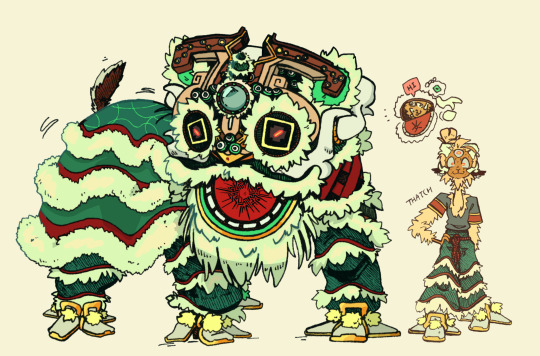
[33]
When i first saw the nomai space suits, their bulky frame and colorful appearance reminded me of lion dance costumes. So, i wanted to try making a lion dance costume that's nomai themed.
The mirror in the center of a lion dancer's head (right where the third eye would be) is supposed to scare evil spirits off by showing them their own reflection. Also, the green lions symbolize friendship! Those facts are coincidental, but i think they suit the nomai very well. The back set of horns also kind of fit in, because if you look at an actual lion dance costume, there's a circle on each side right where i have the back horns connect in this design.
Thatch is there because they were the festival envoy for Escall's clan - i couldn't think of any better candidate for a festival dancer ::]
#outer wilds#nomai#lion dance#fanart#i also thought the eye symbol being in the mouth would be perfect#i'm not chinese so if i've made a design mistake please let me know#i've spent a loooong time staring at photos and videos hahaha
306 notes
·
View notes
Text


When Mori talks about Nash in relation to war strategy, it's because of Nash's contribution to game theory (the Nash equilibrium). Game theory is a model that helps interpret interactions between players, and while it can be (and is) also applied to analysis of war strategy, it is a bit of a stretch to say that Nash, who was a mathematician, studied war strategies (as far as I'm concerned, he very much did not. To say Nash was an academic who studied war strategy is inaccurate). It's still funny that Mori is bringing up game theory again after (inaccurately) talking about it in the last season 1 episode, he must really like it.
It's a bit destabilizing to see Kissinger being mentioned here– because differently from all the other authors and thinkers fleetingly mentioned in bsd, it's one that feels close in time and inseparable from our world's history (the fact alone that he was still alive when this episode aired is terribly disorientating for me). You can't think of Kissinger without thinking about the Cold War, but it's unfeasible to think the bsd universe experienced something akin to our Cold War. Anyways, he was one of the main enablers of the realist theory as an international relations school of thought, which I suppose is a theory that fits Mori to a tee.
#I'm not familiar enough of Schelling to confidently talk about him :( But if anyone wants to add to this 👀👀👀#ōgai mori#bsd#bungou stray dogs#bsd s2#bsdrewatch2023#Also Mori bringing up western figures while Fukuzawa replies mentioning a Chinese one further emphasizes the west vs. east symbolism :)
33 notes
·
View notes
Note

✞✞✞• |ℍ𝕒𝕡𝕡𝕪 ℍ𝕒𝕝𝕝𝕠𝕨𝕖𝕖𝕟|•✞✞✞
Thank you!! This looks lovely!
#I’m wasn’t sure if I should post it bc of the kabuki mask but#I like how it looks!#just be careful about using Japanese symbols and clothes for Chinese media#I know it wasn’t out of malice but it’s important#JUST FOR FUTURE reference it’s not a problem
411 notes
·
View notes